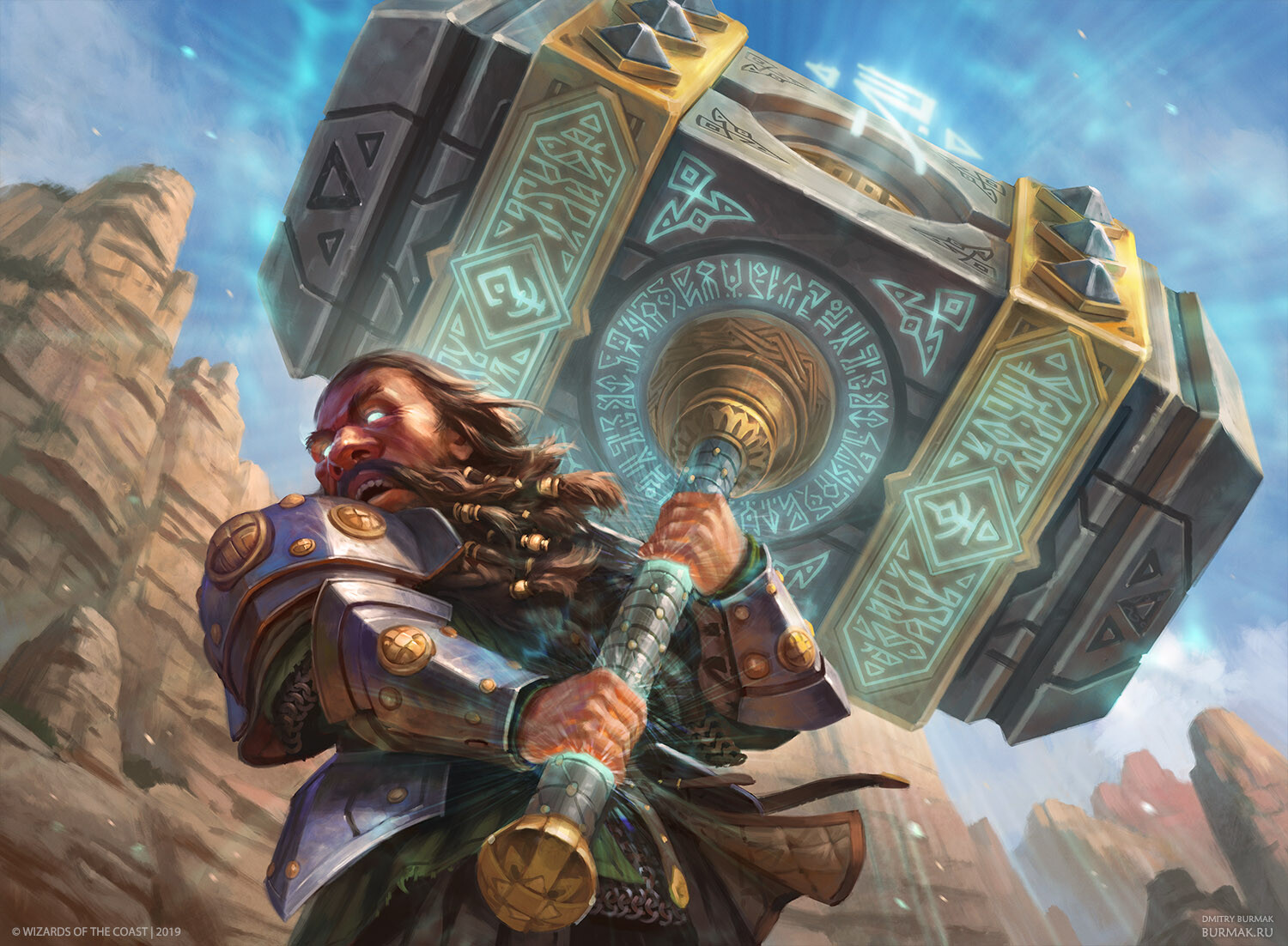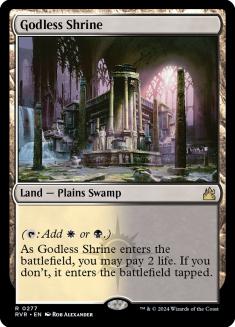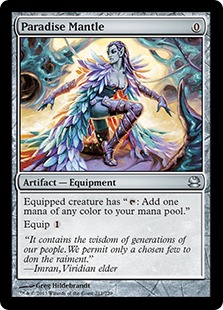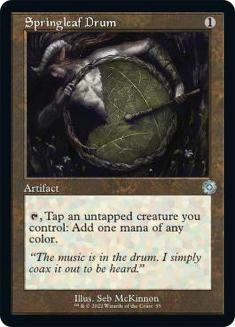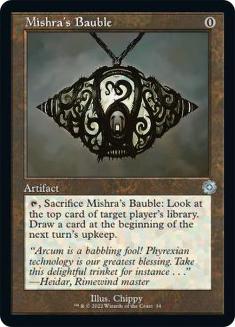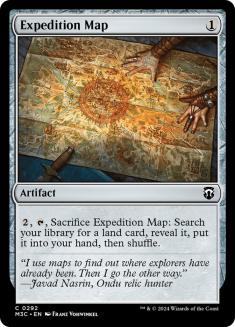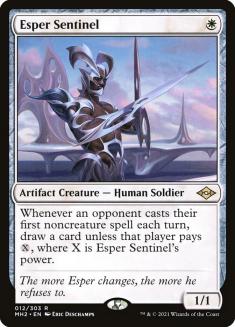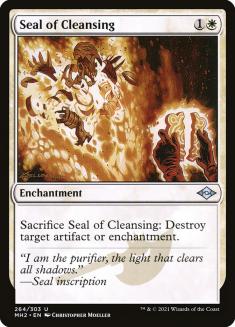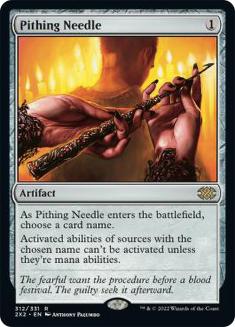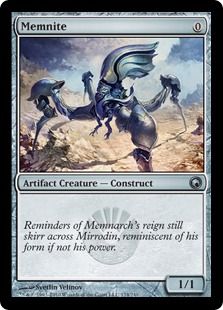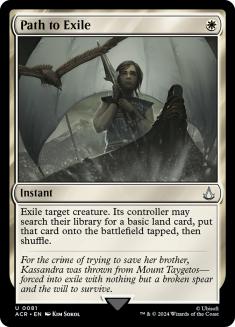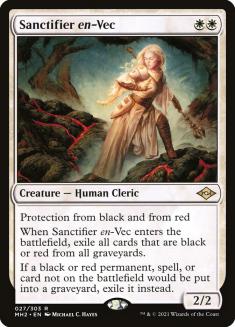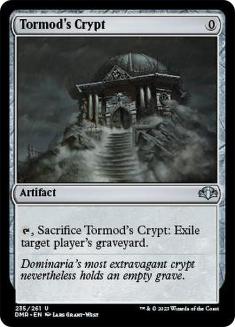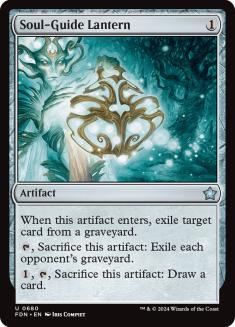There’s no doubt that Urza’s Saga has been the most impactful card in Modern from Modern Horizons 2. The powerful land has found success in a variety of archetypes, from Food decks with Asmor and The Underworld Cookbook to Amulet Titan to Affinity.
This array of homes comes from the card’s versatility, where it can enable a quick combo kill, grind out the opponent with large Construct tokens, or find a key hate card or lock piece to slowly choke the opponent out of the game. It’s rare that we see this kind of power and versatility in one card, and the fact that it comes on a land makes it difficult to interact with profitably.
But with so many decks utilizing Urza’s Saga, there’s bound to be one or two that fall under the radar. That’s exactly what has happened to Colossus Hammer decks. This has been one of the best performing creature-combo decks in Modern since it arrived in the metagame, and it’s a perfect home for Urza’s Saga.
The Perfect Home for Urza’s Saga
The obvious synergy here is that Urza’s Saga can tutor for Colossus Hammer. This is the key card that you need to find early and often to make the combo work, and Saga lets you find Hammer on Turn 3, exactly when you want it most games. On top of that, it’s an uncounterable way of finding the Equipment, ignoring cards like Chalice of the Void.
Should you need a flying threat to attach Colossus Hammer to after the declare blockers step via Sigarda’s Aid, Saga can also find Ornithopter. So it’s a great combo enabler for this deck, which makes it an easy addition.
But the more important aspect of the card is the ability to make Construct tokens. Typically, creature combo decks are faster than spell-based combo, but in return, they open themselves up to creature removal as a viable means of interaction. Creature-combo decks need to find some way to mitigate that added vulnerability. Selesnya Company, the most successful creature-combo deck in Modern this past calendar year, takes advantage of just how difficult Heliod, Sun-Crowned is to remove from the battlefield.
Up until now, all Hammer decks have had to play through removal is Lurrus of the Dream-Den. Not to speak ill of Lurrus, because it’s one of the best cards in all of Modern, but it’s not enough to grind through the depth and quality of disruption that the Modern metagame presents. In order for it to take over the game in this deck, you have to have completely run your opponent out of removal, which they’re loading their deck with in this matchup.
With Urza’s Saga, you now have a means of playing like a traditional aggro deck by making a bunch of Constructs. They won’t be as large as they are in Asmor decks, but between various Equipment, Memnite, and Ornithopter, it’s easy to imagine them getting in the 5/5 range (certainly big enough to present a major threat).
When your opponents sit back with a full hand of interaction, you can lean on them with these Construct tokens, and now you’re attacking them as both an aggro deck and a combo deck.
This leaves them needing to find a tight balance between stopping both threats. If they ignore the aggressive creatures for too long, they will lose with removal left unused in their hand. If they react too strongly to the aggression, they will either run out of interaction for the combo or tap low enough that they open a window for you to go for their throat.
Hammer decks haven’t had this dynamic before because there wasn’t enough space to fit in those kinds of aggressive threats. You could play a Batterskull to pair with Stoneforge Mystic but that’s unreliable and unlikely to dominate a game by itself. Adding this dynamic in a package that doesn’t take away from the combo at all opens up a whole new dimension for the deck and makes it much harder to contain.
This deck already had speed on its side. It can win as early as Turn 2 and regularly wins on Turn 3. But it’s not as resilient as the other creature-combo decks in the metagame, and it entirely depended on assembling the combo to win, so it had a higher fail rate. Those issues are significantly mitigated while at the same time ratcheting up the power of the deck to another level. This is the premier creature-combo deck in the Modern metagame moving forward.
Here’s my current list:
Creatures (24)
Lands (22)
Spells (14)

I’m not deviating far from the stock lists because the build is relatively straightforward, but there are a few decisions that you face when building this deck that I want to discuss.
The Black Splash
Most Hammer decks were Orzhov when the deck first emerged, but recently there’s been a shift towards Mono-White lists. The deck wants to play Horizon lands regardless so the only cost here is some fetchlands and a Godless Shrine to make it work. Normally I’d be all for such a low-cost change that opens up a whole other color, but in this case I still favor the Mono-White builds because black doesn’t add anything useful.
The primary addition that the black splash brings is Thoughtseize, which I don’t think is appropriate for this deck. In most interactive matchups, there aren’t any cards you desperately want to take save for Violent Outburst out of Living End, and you’re already bringing in graveyard hate in that matchup while also being better-equipped to grind through Living End sweeping your battlefield.
The black splash also gives you better removal options like Fatal Push or Prismatic Ending that consistently targets permanents with mana value two. But again, this is a tiny upgrade on Path to Exile and the various Disenchant effects, especially when Prismatic Ending doesn’t target opposing Urza’s Sagas and you want some number of Seal of Cleansing because it can be used on your opponent’s turn and synergizes well with Lurrus.
With so little to gain, I don’t see enough of a reason to take more damage in a metagame with plenty of aggressive strategies, but it’s something you should keep in mind moving forward because it won’t take much of an upgrade for the splash to become worthwhile again.
Paradise Mantle VS Springleaf Drum
Some lists play neither of these and instead opt for a higher land count, some play one or the other, and some play a split of both. This is the most contentious choice in building the deck, and I’ve opted for a 3/1 split, favoring Springleaf Drum.
With eight free creatures, I think playing none of these cards is foolish, because the mana acceleration is quite valuable. It’s how you enable your fastest kills in racing matchups, and between Stoneforge Mystic, utility lands, and Lurrus, you have a surprising number of ways to utilize extra mana. Playing either of them also lets you find a mana source with Urza’s Saga in games where you’re short on that axis, which can often be the difference in a game.
Stony Silence shutting them down is a consideration, as that card has seen a resurgence in sideboards recently, but it’s not popular enough for me to want to make the list worse in every other matchup and every pre-sideboard game.
So the question becomes which one is better, and in a vacuum the answer is certainly Springleaf Drum. It doesn’t require the creature tapping to not have summoning sickness, so as long as you cast it before the creature you want to tap, there’s never a window for your opponent to deny you a mana by removing the creature. Moreover, whenever a creature equipped with Paradise Mantle dies, you have to pay another mana to re-equip it to something else. Springleaf Drum lets you switch which creature you use to make mana turn after turn without any further mana investment. Springleaf Drum is just a much better card.
But the fact that Paradise Mantle is an Equipment matters in a deck with Puresteel Paladin. This synergy isn’t great enough for me to want to play more Paradise Mantles, but it is enough for me to want a single copy to find with Urza’s Saga and Stoneforge Mystic in case you need to draw a card.
I did consider playing 21 lands to go up to four copies of Springleaf Drum, but they’re awkward in multiples considering you only have so many creatures you want to tap to activate them, and I wanted fourteen guaranteed white sources on Turn 1 in order to consistently cast Esper Sentinel and Giver of Runes on curve.
Mishra’s Bauble
Last is the question of Mishra’s Bauble, which is usually a guarantee in Lurrus decks. I, like most pilots of this deck, eschew the card entirely because that’s not the strategy being employed here. Simply drawing cards is at its most effective when you have plenty of interaction to then whittle away your opponent’s resources, and Hammer has virtually none.
In a linear, proactive strategy like this one, you always want to use Lurrus to recast threats and destroyed Colossus Hammers, and you already have plenty of free threats to recast when you only have three mana.
Moreover, drawing Mishra’s Baubles is worse in this deck than nearly any other, since you care so much about speed. Waiting the extra turn to draw a card can easily make the difference between winning and losing, so the opportunity cost of adding them is much higher here than usual.
“This is the premier creature-combo deck in the Modern metagame moving forward.”
I’ve seen lists that play one copy as a value tutor target for Urza’s Saga, but I’ve opted for Expedition Map in that slot, since Map provides more immediate value unless you already have Lurrus on the battlefield, in which case you’re likely in a good position, and Map can also be used to find Inkmoth Nexus in matchups where you need to evasive, hard-to-answer threat or an infect creature to beat a Heliod player on a billion life.
Sideboard Guide
VS Amulet Titan
Out:
In:
This matchup is mostly about speed, and Expedition Map and Esper Sentinel are your slowest cards, so they’re the easy cuts here. You shouldn’t worry about going down on threats because they won’t be killing many of them anyway.
Instead you bring in a bit of interaction in order to slow them down. The disenchant effects answer Amulet of Vigor and Dryad of the Ilysian Grove, and Fragmentize can destroy Urza’s Saga for a huge tempo swing. I don’t like bringing in Path to Exile because you should be aiming to kill them before Primeval Titan enters the battlefield. If they’ve already resolved one and you have no clear path to victory, you’re unlikely to turn the game around by removing it and giving them a land.
The one PIthing Needle most often names either Engineered Explosives if you’re not worried about a fast kill from them, or Slayers’ Stronghold if you are.
VS Izzet Prowess
Out:
In:
Memnite is your biggest liability against Lava Dart and a weak attacker in any creature matchup, so it gets cut. You’re only down two threats with the two Sanctifiers coming in and those are nigh-unkillable since you have several ways to protect Sanctifier from Kozilek’s Return.
I also like bringing in Path to Exile in matchups where your opponent has lots of removal but is aggressive, because you can usually beat them in the long game. You just need to keep the pressure off so you have time to leverage Lurrus and Urza’s Saga. Still, Expedition Map is unnecessary because your other attrition elements are enough to consistently beat them.
VS Food Decks
Out:
In:
This is a tricky matchup because nearly all of your sideboard cards can interact with them in some way but you can’t bring too many cards in or you weaken your own plan too much. The guiding principle here is that Asmor is the card you’re most worried about because it lets them control your creatures and break up your combo. So I bring in Path to Exile to remove it and Pithing Needle to stop either its activated ability or the Food engine itself by naming The Underworld Cookbook.
Anything beyond that I think is over sideboarding because the other sideboard cards aren’t nearly as effective. Artifact destruction doesn’t stop key threats like Urza, Lord High Artificer or Feasting Troll King, and graveyard hate answers very few of their threats given how these decks are currently built.
I’m cutting Esper Sentinel over Memnite since all their spells are cheap, making it rather easy to pay for Sentinel, and I’m not confident going long in this matchup regardless, so I’d rather enable fast kills while they are setting up their engine.
VS Living End
Out:
In:
Pretty straightforward here, bringing in all the graveyard hate for the worst cards in the maindeck. Sanctifier isn’t great now that they have moved to a blue base, but it stops Street Wraith and Architects of Will and still carries Equipment so the opportunity cost is low.
I considered cutting Giver of Runes instead of Memnite to get more speed but they do have some interaction in their sideboard and with the blue base comes some flying creatures, so you’re not guaranteed to attack freely with a flyer.
Expedition Map stays in here because it finds Inkmoth Nexus, which is your easiest threat to hide from Living End and your best way to kill in one shot, so it’s very important in the matchup.
VS Jeskai Stoneblade
Out:
In:
Not much to do here. Ragavan, Nimble Pilferer is easy to contain on the ground, and Stoneforge Mystic leaves a narrow window to effectively answer it, so I don’t like bringing in Path to Exile. One Pithing Needle can sometimes stop Stoneforge Mystic and later on tags their planeswalkers, so I bring one in over a Springleaf Drum in a matchup where acceleration isn’t as valuable because they have so much cheap interaction. Keep in mind that you can sometimes punish players who don’t sacrifice their fetchlands in response to the third chapter of Urza’s Saga by finding the Needle as well.
VS Five-Color Humans
Out:
In:
Esper Sentinel is obviously your worst card in the maindeck and Path to Exile your best in the sideboard, so that swap is easy. There aren’t any other cards you want to cut nor other exciting cards in the sideboard, but the first Pithing Needle is better than an Esper Sentinel since it can shut down Aether Vial. You don’t want to interact on that front too often, so bringing in the second Needle or Disenchant effects is overkill unless they have a build with other relevant targets.
VS Goglari Yawgmoth
Out:
In:
This is a matchup where I wish the Soul-Guide Lantern was Grafdigger’s Cage, and if it grows more popular you can make that swap. The one-shot effects aren’t great so I only like bringing in one of them as a tutor target for Urza’s Saga. Sanctifier en-Vec is similarly mediocre since it only shuts down a third of the undying creatures, but the opportunity cost is once again quite low.
Path to Exile and Pithing Needle are your best answers to their namesake card, so those are the obvious additions.
This is a lot of cards to bring in, but you have plenty of mediocre cards. The small ground creatures are weak against so many blockers and few noncreature spells, and I’m not looking to grind in this matchup, so Expedition Map and Paradise Mantle are expendable.

